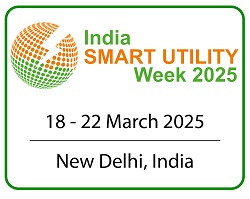ROHM has announced the availability of 2 new types of 650V IGBTs that combine class-leading low conduction loss with high-speed switching characteristics. This makes them ideal for power conversion in general-purpose inverters and converters for consumer appliances, such as ACs and IH (Induction Heaters), as well as industrial equipment, including power conditioners, welding machines, and UPS (Uninterrupted Power Supplies). A total of 21 models are offered, consisting of the RGTV series, which features short-circuit tolerance, and the RGW series that delivers fast switching speed.
In recent years, the emergence of IoT has caused an exponential growth in the volume of data generated, bringing about a need to improve the functionality and capacity of data centers. However, as the number of servers and UPS essential to ensuring stable operation of the main power supply continues to rise, it becomes increasingly difficult to reduce power consumption. In addition, in high-power applications that utilize IGBTs there is a need to maintain reliability by simplifying measures against overshoot during switching, which can lead to device failure or malfunction.
In response, ROHM utilized thin wafer technology and a proprietary structure to deliver class-leading performance that optimizes the trade-off relationship between conduction loss and switching speed. For example, when used in an interleaved PFC circuit, efficiency is improved by 1.2% at light loads and 0.3% under heavy loads, contributing to lower application power consumption. In addition, optimizing the internal design allowed ROHM to achieve smooth switching characteristics that decrease voltage overshoot by 50% compared to products with equivalent efficiency, reducing the number of parts required along with design load.

Key Features
- Combines industry-low conduction loss with high-speed switching characteristics
These two new series adopt thin wafer technology that reduces wafer thickness by 15% over conventional products and an original structure featuring a refined cell design to provide the industry’s lowest conduction loss (VCE(sat)=1.5V) with fast switching characteristics (tf=30 to 40ns).


- Enables soft switching operation, reducing design load
Internal device optimization makes it possible to achieve soft switching for smooth ON/OFF operation. This decreases voltage overshoot during switching by as much as 50% over conventional products, reducing the number of external parts required, such as gate resistors and snubber circuits used to control overshoot. As a result, ROHM’s IGBTs eliminate the need for overshoot countermeasures on the application side, minimizing design load.


Lineup
Adding 2 new models – the RGTV series featuring a short-circuit resistance of 2us and the fast-switching RGW series – ensures support for a broader range of applications.
New RGTV Series (Short-Circuit Tolerance Type)

New RGW Series (High-Speed Switching Type)

Availability:Now (Samples and OEM Quantities)
Applications
Industrial equipment (i.e. UPS, welding machines, power conditioners), AC, IH, and more
Terminology
Conduction Loss
With transistors such as MOSFETs and IGBTs, a voltage drop occurs when current flows through the internal structure. Conduction loss is the loss resulting from this voltage drop.
IGBT (Insulated Gate Bipolar Transistor)
A power transistor that combines the high-speed switching characteristics of a MOSFET with the low conduction loss of a bipolar transistor.
Short-Circuit Tolerance
Ability to tolerate a short-circuit which could cause destruction of the device.
Voltage Overshoot
A voltage that exceeds the specified value when switching ON/OFF. Once the voltage exceeds the steady state value due to overshoot, it returns to the steady state value.
Download Techmezine Android app on google play store: Download Now












